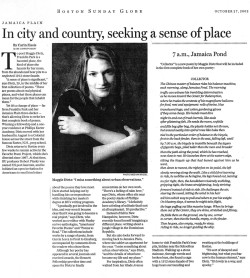AS/COA Online | Interview: Dr. Thomas Dillehay on Moon Tears: Mapuche Art and Cosmology
/
 Dr. Thomas D. Dillehay, a distinguished professor of anthropology at Vanderbilt University and Professor Extroardinaire at the Universidad de Chile, talks with AS/COA Online about the objects featured in Moon Tears: Mapuche Art and Cosmology from the Domeyko Cassel Collection—the exhibition featured at the Americas Society. In a interview about how the history and rituals of Chile’s largest indigenous group are reflected in the exhibition, Dillehay emphasizes the ways that the Mapuche create linkages with their ancestors through ritual as well as some of the changes that have occurred in Mapuche communities over time.
Dr. Thomas D. Dillehay, a distinguished professor of anthropology at Vanderbilt University and Professor Extroardinaire at the Universidad de Chile, talks with AS/COA Online about the objects featured in Moon Tears: Mapuche Art and Cosmology from the Domeyko Cassel Collection—the exhibition featured at the Americas Society. In a interview about how the history and rituals of Chile’s largest indigenous group are reflected in the exhibition, Dillehay emphasizes the ways that the Mapuche create linkages with their ancestors through ritual as well as some of the changes that have occurred in Mapuche communities over time.
In the late 1970s and 1980s, Dr. Dillehay directed excavations in Monte Verde, Chile, which included human artifacts dated at more than 12,500 years old. The discovery fundamentally changed migration theories of the Americas. He has authored 15 books, among them the award-winning 2007 publication Monuments, Empires and Resistance, as well as more than 200 refereed journal articles.
AS/COA Online: The exhibition covers three areas: contact, conquest, and political organization. How are these themes significant in the relation to the Mapuche and the exhibition?


